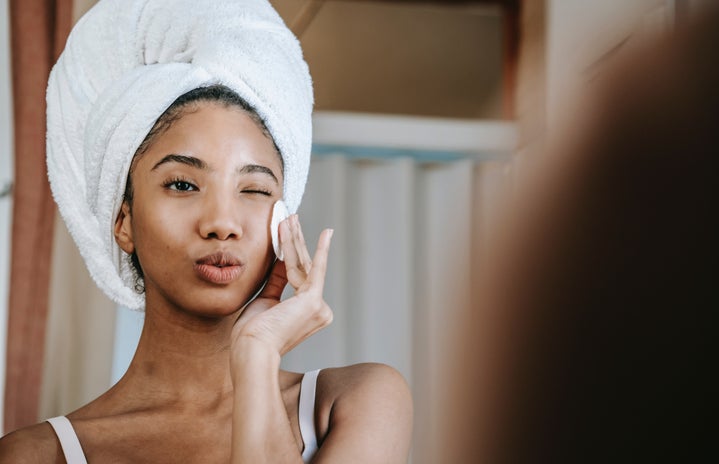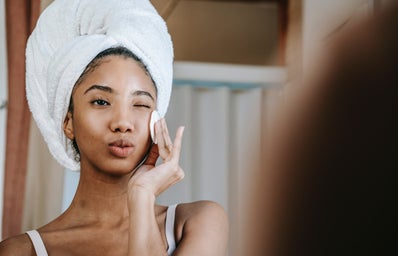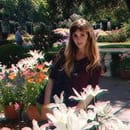Just like with fashion, beauty also goes through trends. With the mid to late aughts, came the arrival of social media and resurgence of more rock/alternative music from bands including Green Day, Blink 182, Black Veil Brides, and Simple Plan. The likes of Michelle Phan and NikkieTutorials pioneered the YouTube beauty community, showing fans how to create the perfect smokey eye or glam look. MySpace allowed for individuality to shine, with users being fully in control of their profile look, songs, font, and even who their top 8 list of friends were. Scene Kings and Queens ruled the internet with their dramatically teased and colored hair, heavily lined eyes, and angled selfies. Warped Tour was the Coachella of its time, where some of the biggest alternative bands of the day could be seen performing on different stages. Everything about this era was maximalist, bold, and purposefully in your face. It was an open rebellion against the boomer generation, who could never quite understand why the youth was calling out the flaws in the system that had so clearly set them up to fail in the adult world.
Enter Gen Z. At this point, social media has seen many changes. Feeds and content are becoming more and more curated, and intentionally thought-out. Simultaneously, Snapchat had us all overusing filters, and highly photoshopped stars resulted in comparing ourselves to an unachievable beauty standard. When TikTok finally came around, it finally forced users to show a more realistic side of themselves. While it initially started out as the same concept as Vine, the skits and dances eventually also made way for story times and numerous other everyday content that was relatable to viewers – something that YouTube had once offered, but now with paid partnerships, more demand for higher quality and production, Instagram and YouTube became less popular as the disconnect grew. The beauty community that prospered and had took over social media in the 2013-2019 time period now seemed to fade away into the background to make way for newer up-and-coming influencers and trends set by Gen Z themselves. Part of this was due to numerous controversies in the beauty influencer community, with too many “Dramageddons” to count – and partly due to the growing need for something more real.
This is where the clean girl aesthetic, as it is called, comes into play. If you scroll through any bigger influencer’s feed (Hailey Bieber and Emily Ratajkowski are prime examples), you will find many photos of them looking fresh faced, dewy, with full brows and minimal contouring and soft eye make-up, if any, glossy lips, and typically slicked back hair – accompanied of course, by luxury skincare products and services. This is an elevated version of the “no make-up look” that had gained some momentum in earlier years. Trends have a way of coming back and being drastically in opposition to the one before, so it comes as no surprise that the emo/scene and glam looks of the early 2000’s and 2010’s eventually gave way into something a bit more natural. The focus has shifted from covering up every imperfection with make-up, to treating it with skincare and proper treatments. Millennials pointed out the flaws in the system, and Gen Z took it a step further to start actually making change – both terms of politics, and beauty trends (similarly to how numerous circumstances in the Victorian Era and onwards created the revolution of the Flapper Movement).
As trends continue to quickly evolve and change and more aesthetics such as “cottage core” or “fairy core”, and many others are being circulated on TikTok, I have found myself wondering what the next beauty trend will be – will 90’s thin eyebrows à la Pam Anderson make a comeback? Will a trend stick around long enough to make an impact in an online world, where there is an endless amount of content to scroll through? How will politics inspire the next generation and how it decides to express itself? The issue with these trends, or “cores,” is that there will always be those who do not fit the mold or made to feel as though they can achieve the look or beauty standard, whereas the goal should be to make trends attainable for all – regardless of race, age, size, or gender. The question remains then, will this momentum of trends that seem to be changing daily keep accelerating, or diminish completely? Or, will do a complete 180 and go back to the days of MySpace, where we all code and design our own profiles, with content that is more personal and less of a production? The overall theme with each passing trend has been to go in the complete opposite direction of the last, so with that in mind, will the more 70’s inspired style of today give way to a more grunge feel of the 90’s? Only time will tell!


